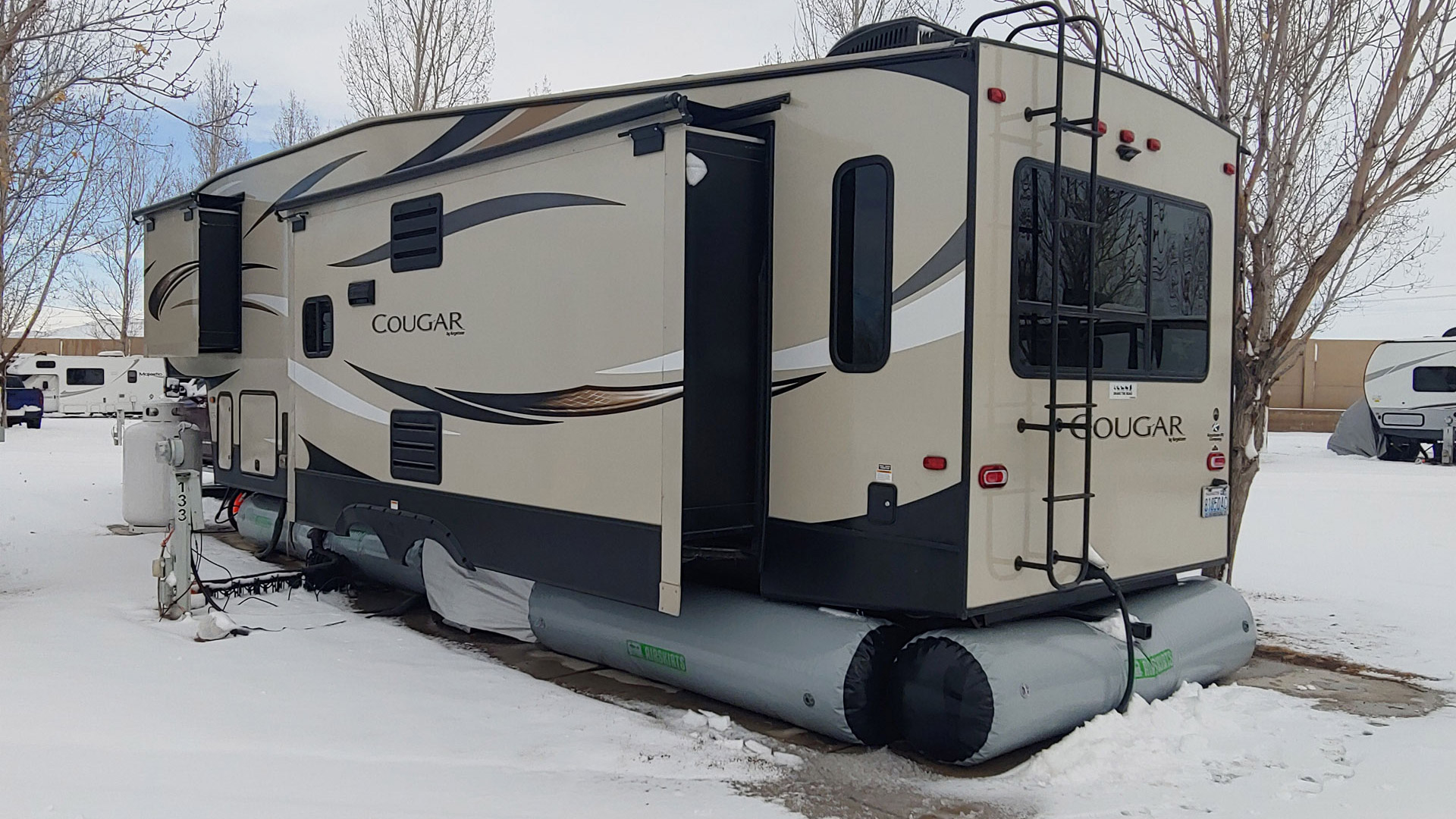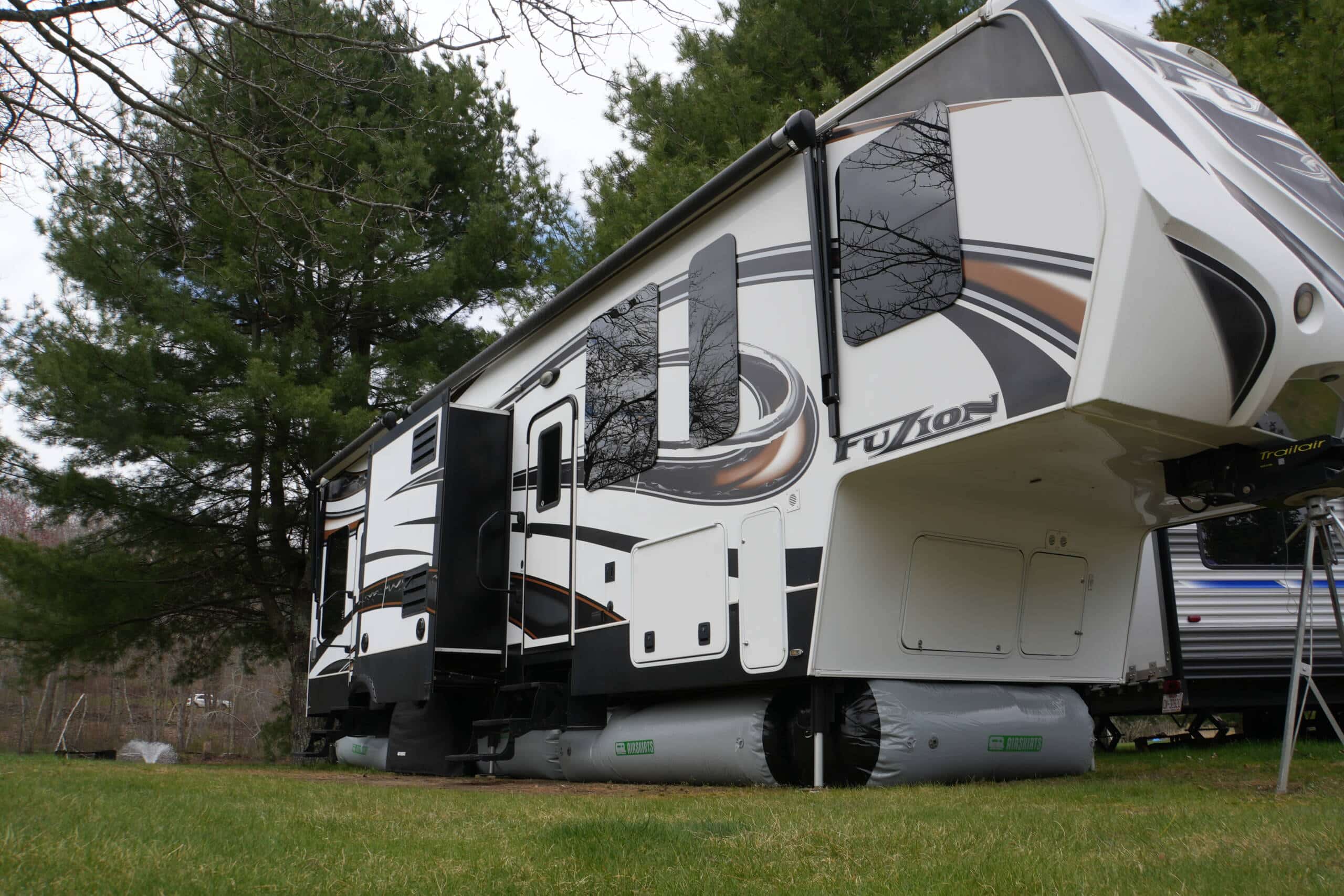RV Skirts: Don’t Just Block Cold Air, Insulate Too!
RV skirts are a mainstay among serious RVers. They are a must-have if you use your RV or trailer in weather cold enough to freeze your plumbing. But even during warm weather travel, good skirting makes any RV or trailer more comfortable and energy-efficient. It all boils down to one thing: insulation.
Cold air running underneath your rig is the enemy. More than one RV owner has learned this the hard way. Cold air makes your floors cold. It saps heat, costing you more to keep your rig warm. A worst-case scenario has your pipes freezing. We all know what that means: a huge repair bill that the insurance company will probably not cover.
RV skirting is designed to mitigate all of these problems. But any type of skirting is only as effective as the amount of insulation it offers. The better the insulating effect, the warmer the air under your RV or trailer will stay.
The Physics of Insulation
Insulating your RV against cold air is a matter of physics more than anything else. For starters, heat is a form of energy. Cold is a lack of that energy. The physics of insulation are all about preventing energy transfer from warm air to cold. Prevent that energy transfer and the underside of your RV stays warmer.
According to the U.S. Department of Energy, the flow of heat from one mass to another can be accomplished through three mechanisms: conduction, convection, and radiation. We are concerned mainly with convection. What is convection? It is the way heat is transferred through liquids and gases. In the case of AirSkirts, the concern is how heat travels through the air.
The interesting thing is that air itself can be an insulator. It is all in how you use it. In fact, that’s one of the main differences between AirSkirts and other types of non-inflatable skirting solutions. Our product utilizes both air and the rubber material our skirts are made of for insulating purposes.
RV Skirts Are A Extra Insulating Barrier
A fair number of RV skirting solutions offer a single layer of protection. That single layer is the only barrier between warmer air under the RV and the colder air outside. It’s true that this sort of arrangement will prevent cold air from blowing under the rig. It also offers minimal insulation. AirSkirts are different.
To begin with, AirSkirts are essentially PVC tubes filled with air. You get two layers of rubber material when each skirt is inflated. One layer is outside the RV and the other is underneath it. In between those two rubber layers is air.
The physics of convection dictate that it is very difficult for heat to pass from underneath your RV and through the two rubber layers and air pocket. The air pocket itself wants to balance the temperature on both sides of the barrier. This makes it awfully hard for heat to escape or cold air to enter.
More Than Just Blocking
The best part of the AirSkirts design is that it does more than just block cold air. Do not misunderstand. Blocking cold air is important, but you can do better. Our RV and trailer skirting blocks cold air and retains any heat underneath your rig. As long as you are going to invest in skirting, combined blocking and insulating is the best way to go.
Many RVers have used conventional skirting solutions. But once they try AirSkirts, there is no going back. How about you? Don’t just block cold air from getting underneath your RV or trailer. Insulate, too.




Leave A Comment